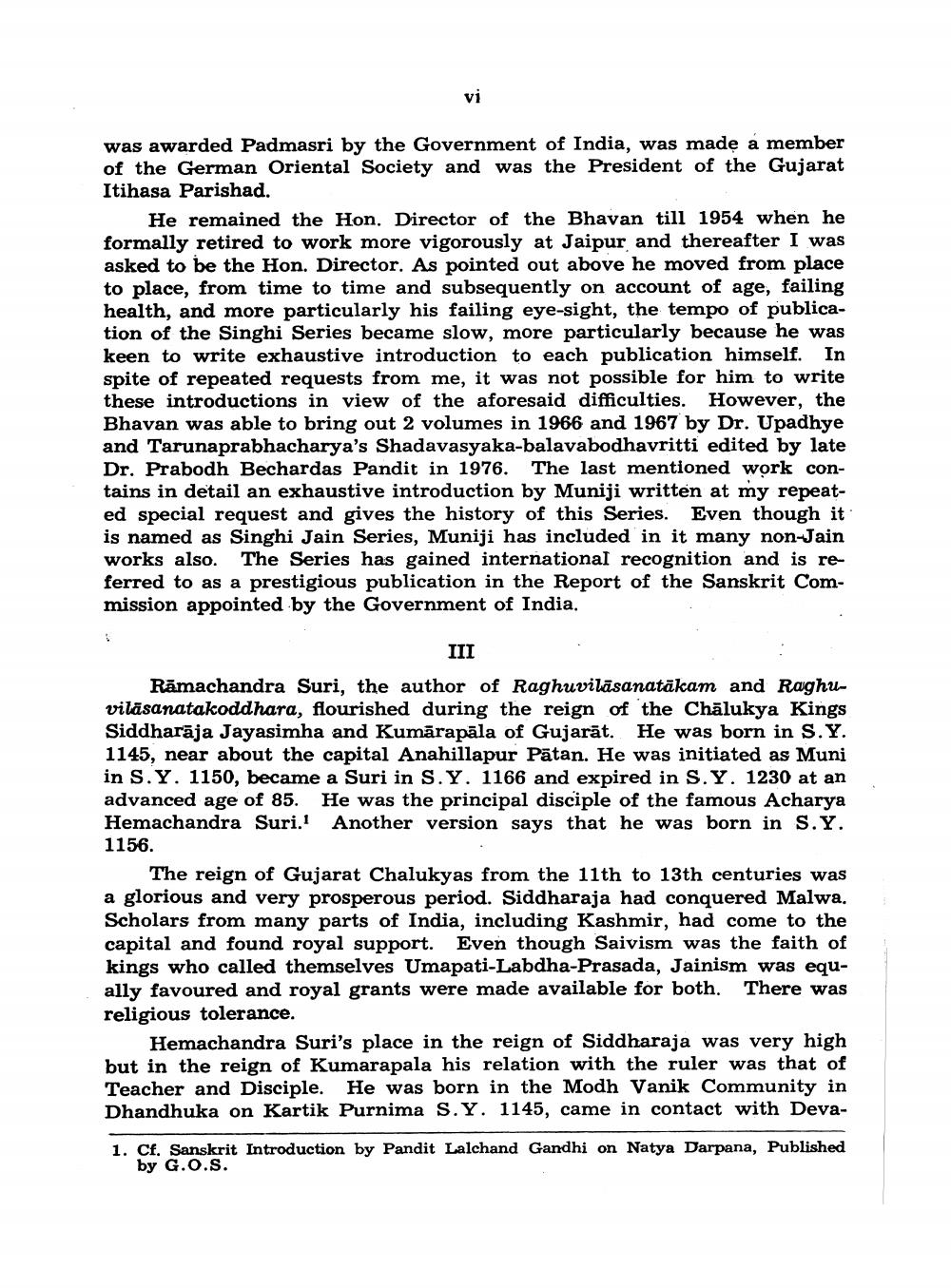________________ was awarded Padmasri by the Government of India, was made a member of the German Oriental Society and was the President of the Gujarat Itihasa Parishad. He remained the Hon. Director of the Bhavan till 1954 when he formally retired to work more vigorously at Jaipur and thereafter I was asked to be the Hon. Director. As pointed out above he moved from place to place, from time to time and subsequently on account of age, failing health, and more particularly his failing eye-sight, the tempo of publication of the Singhi Series became slow, more particularly because he was keen to write exhaustive introduction to each publication himself. In spite of repeated requests from me, it was not possible for him to write these introductions in view of the aforesaid difficulties. However, the Bhavan was able to bring out 2 volumes in 1966 and 1967 by Dr. Upadhye and Tarunaprabhacharya's Shadavasyaka-balavabodhavritti edited by late Dr. Prabodh Bechardas Pandit in 1976. The last mentioned work contains in detail an exhaustive introduction by Muniji written at my repeated special request and gives the history of this Series. Even though it is named as Singhi Jain Series, Muniji has included in it many non-Jain works also. The Series has gained international recognition and is referred to as a prestigious publication in the Report of the Sanskrit Commission appointed by the Government of India. III Ramachandra Suri, the author of Raghuvilasanatakam and Raghuvilasanatakoddhara, flourished during the reign of the Chalukya Kings Siddharaja Jayasimha and Kumarapala of Gujarat. He was born in S.Y. 1145, near about the capital Anahillapur Patan. He was initiated as Muni in S.Y. 1150, became a Suri in S. Y. 1166 and expired in S.Y. 1230 at an advanced age of 85. He was the principal disciple of the famous Acharya Hemachandra Suri. Another version says that he was born in S.Y. 1156. The reign of Gujarat Chalukyas from the 11th to 13th centuries was a glorious and very prosperous period. Siddharaja had conquered Malwa. Scholars from many parts of India, including Kashmir, had come to the capital and found royal support. Even though Saivism was the faith of kings who called themselves Umapati-Labdha-Prasada, Jainism was equally favoured and royal grants were made available for both. There was religious tolerance. Hemachandra Suri's place in the reign of Siddharaja was very high but in the reign of Kumarapala his relation with the ruler was that of Teacher and Disciple. He was born in the Modh Vanik Community in Dhandhuka on Kartik Purnima S.Y. 1145, came in contact with Deva 1. Cf. Sanskrit Introduction by Pandit Lalchand Gandhi on Natya Darpana, Published by G.O.S.




